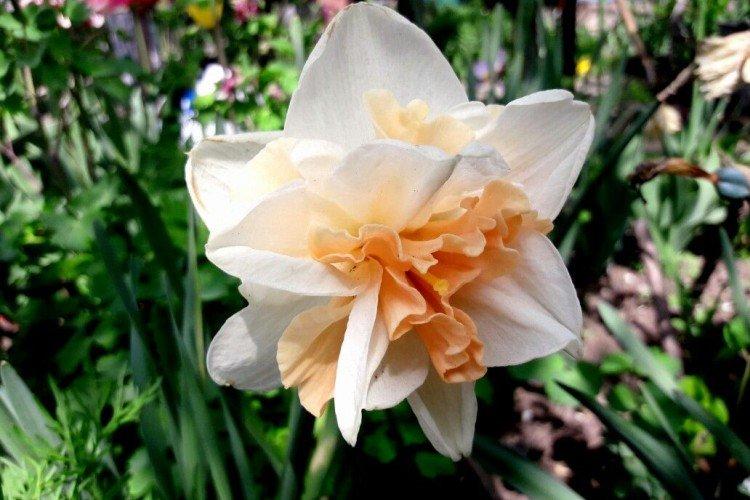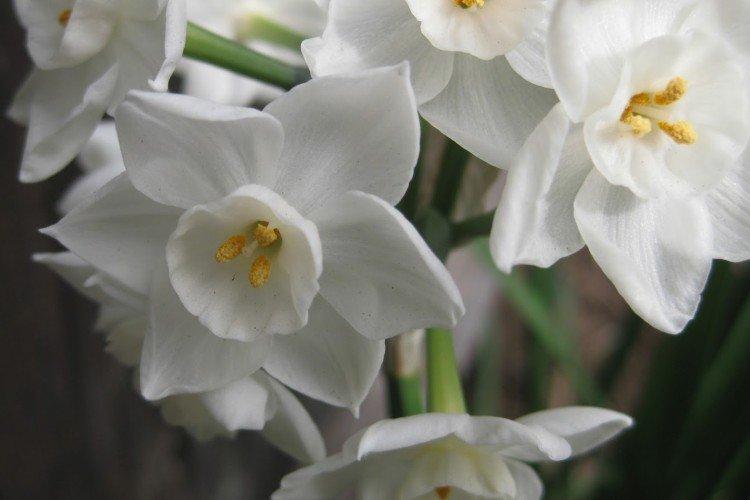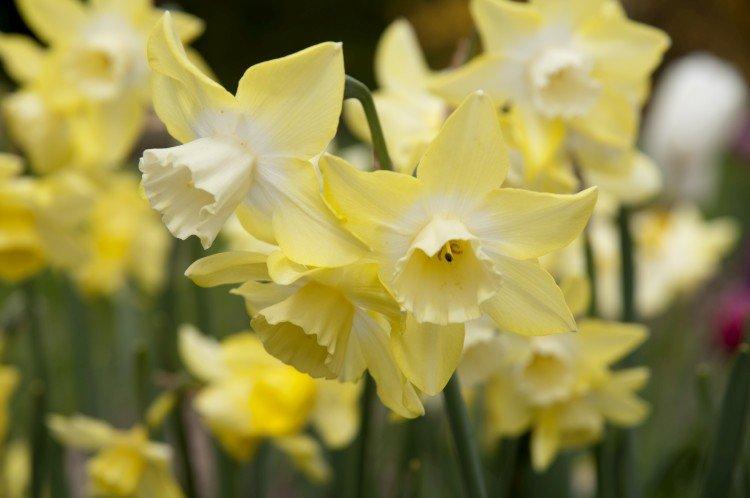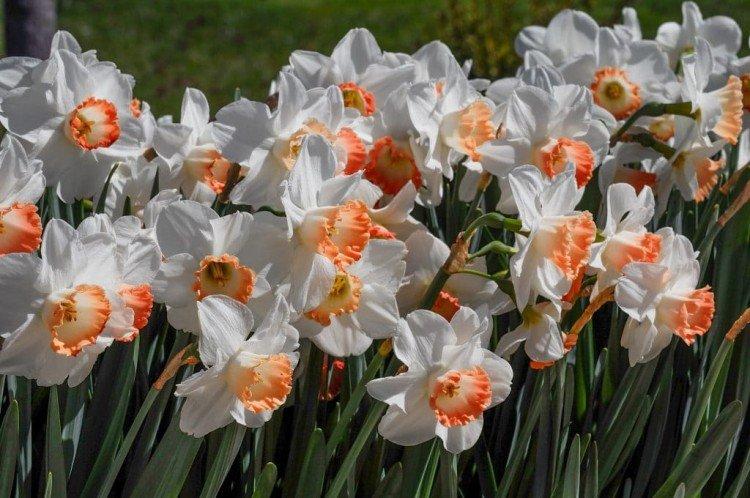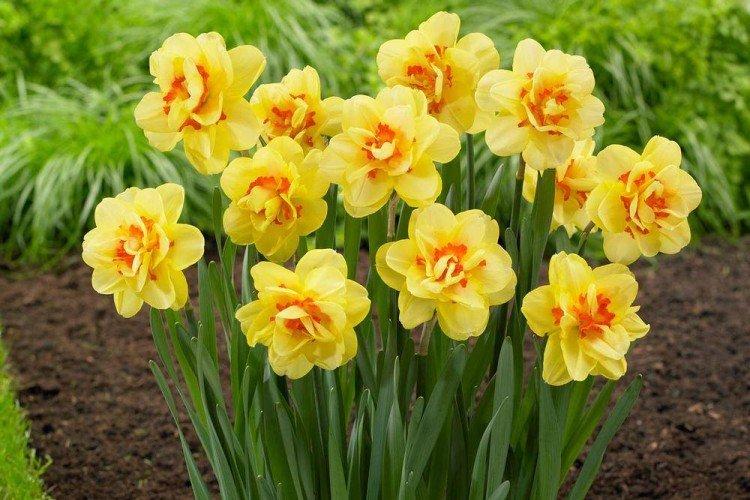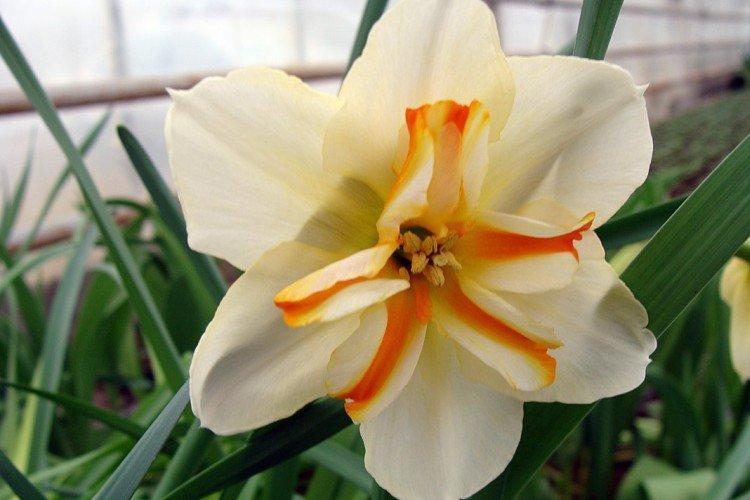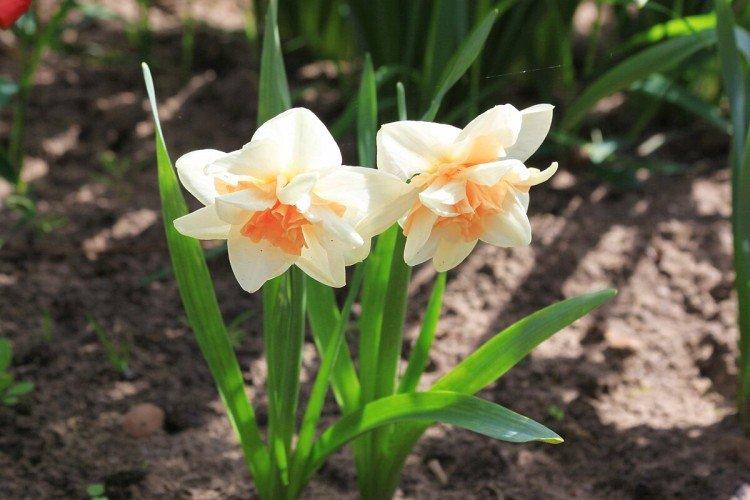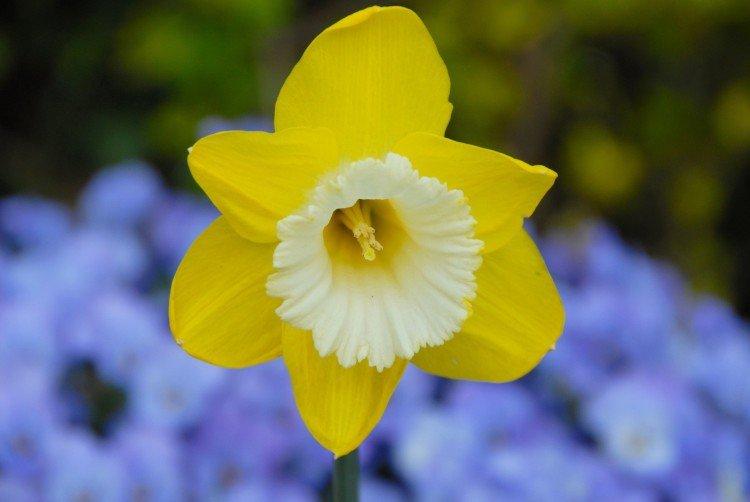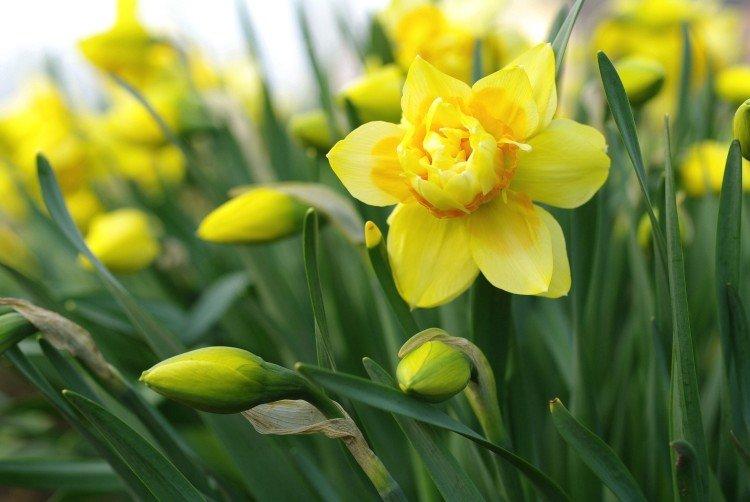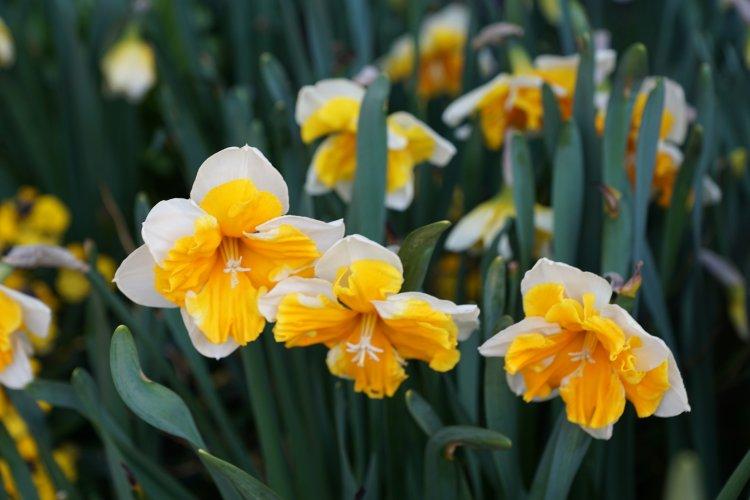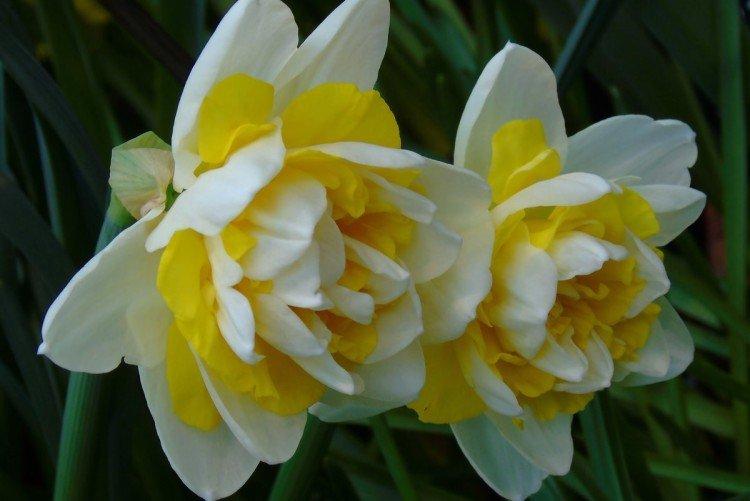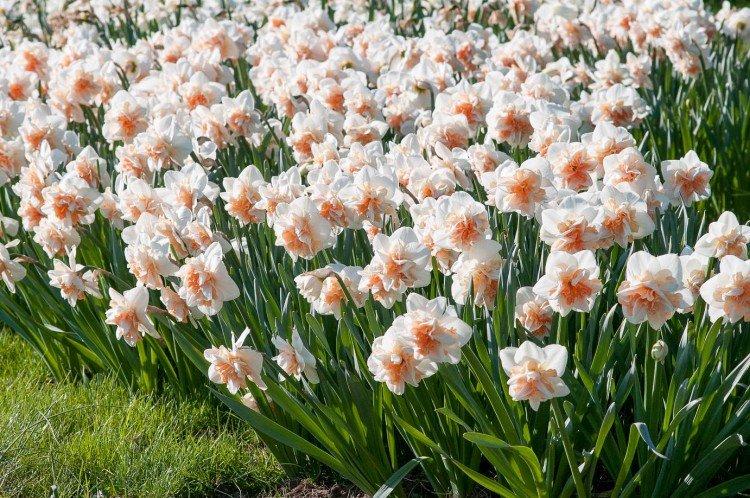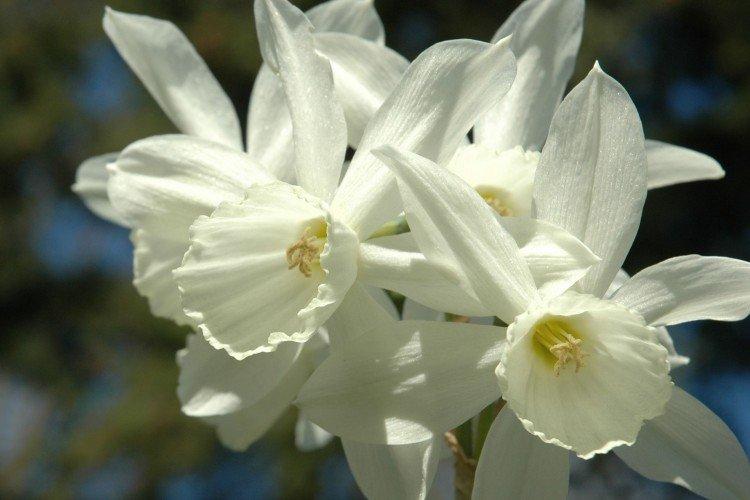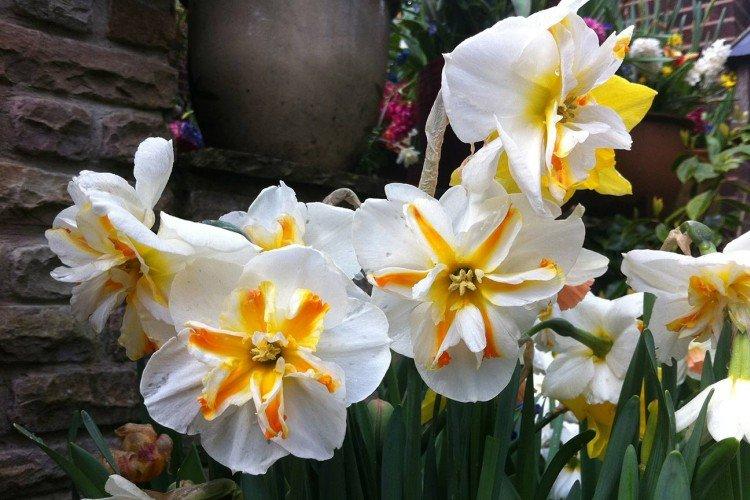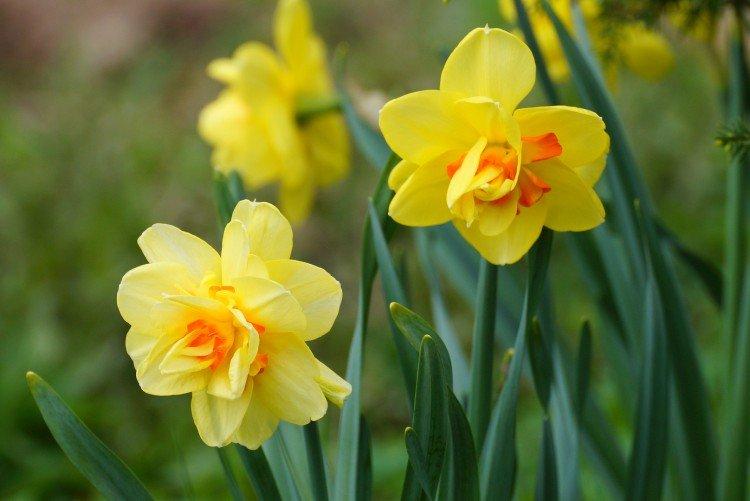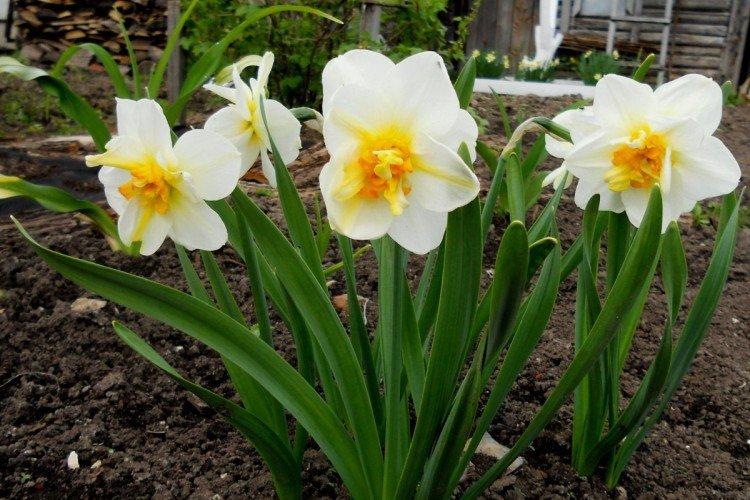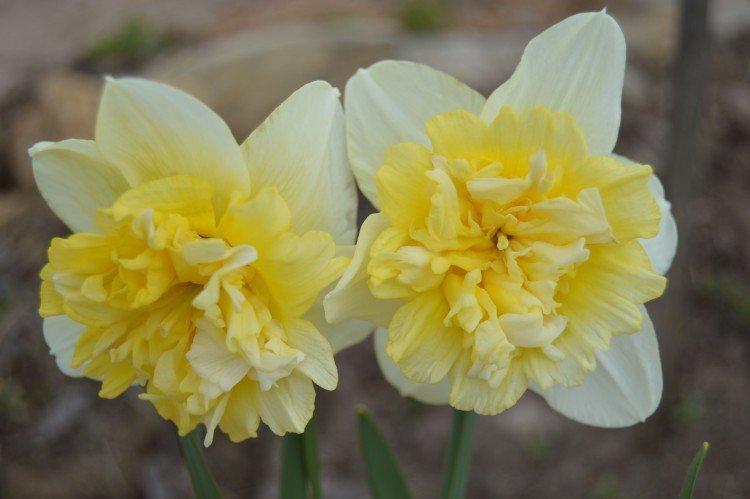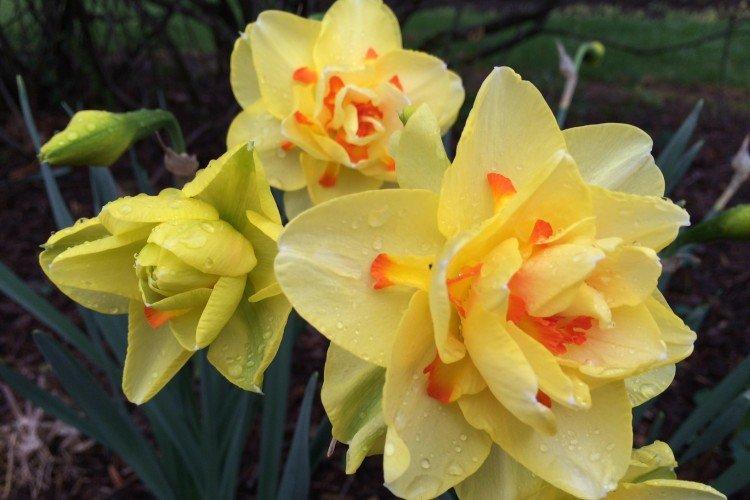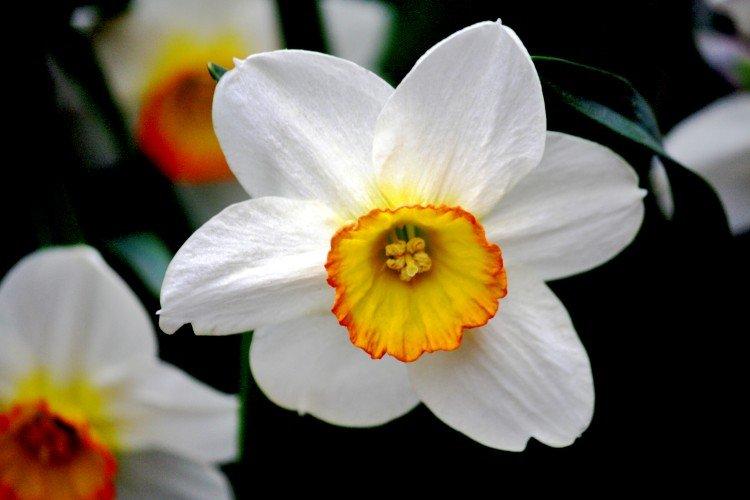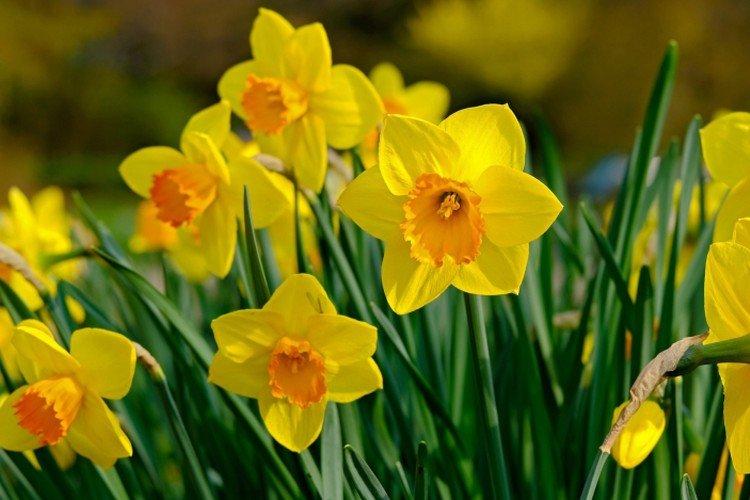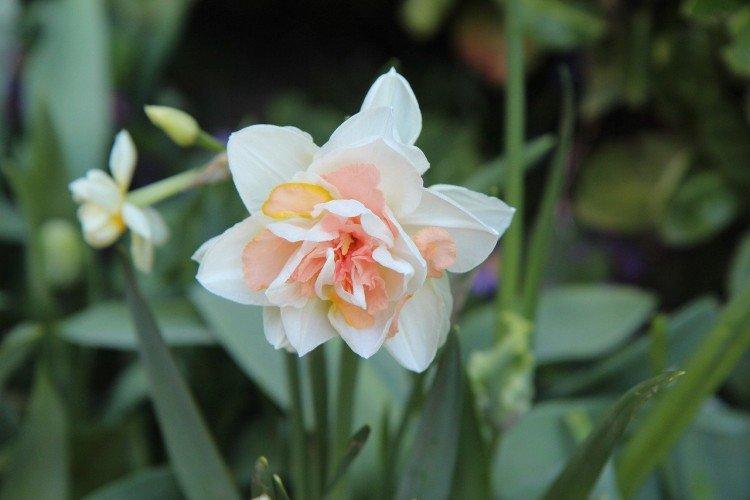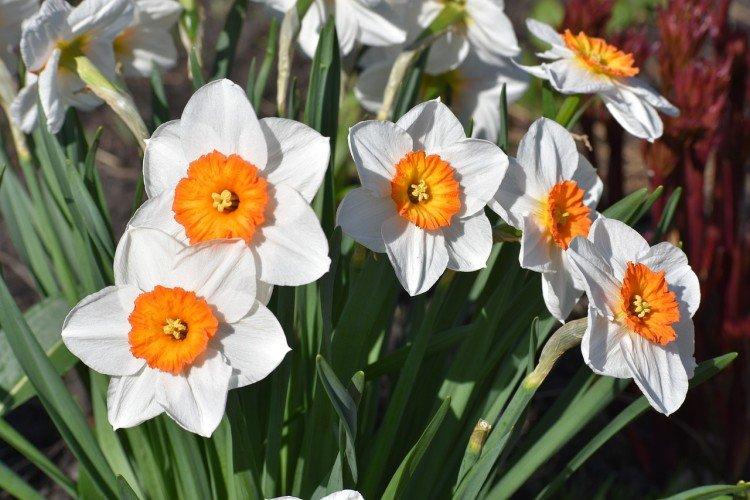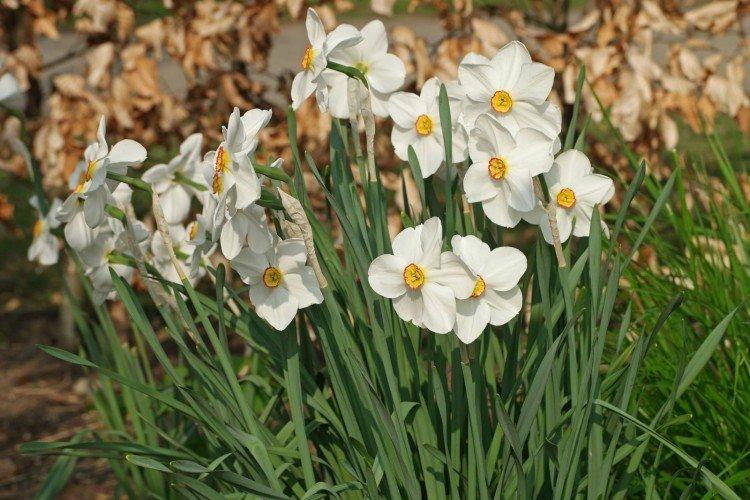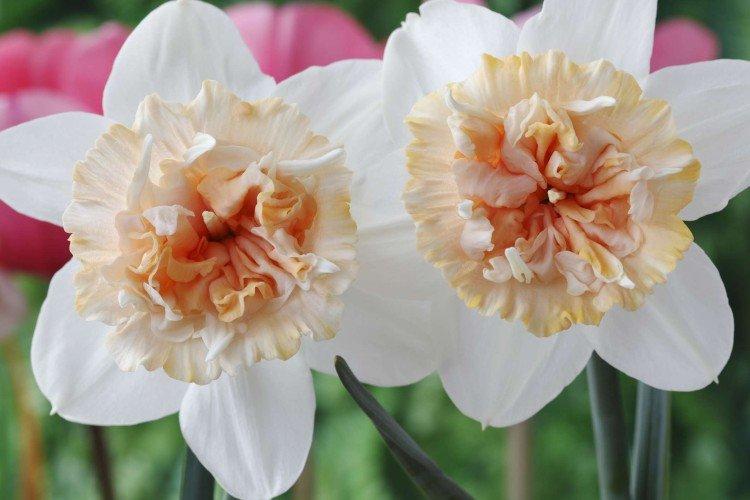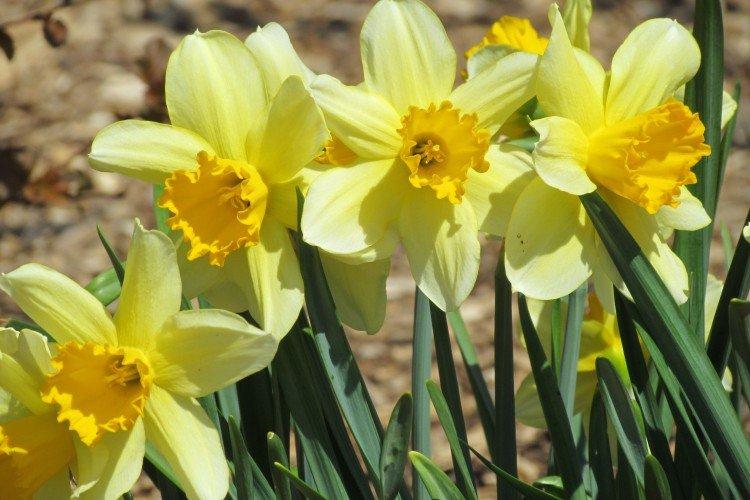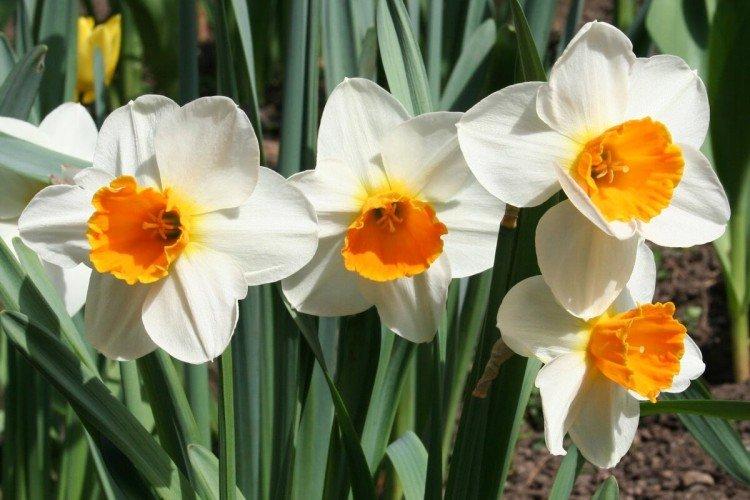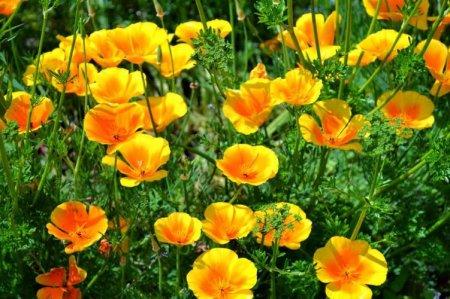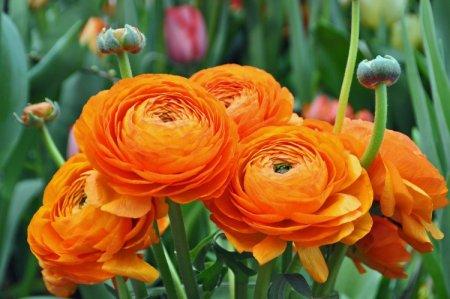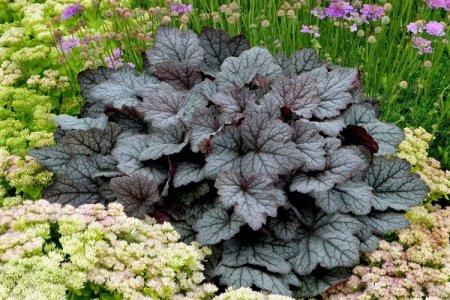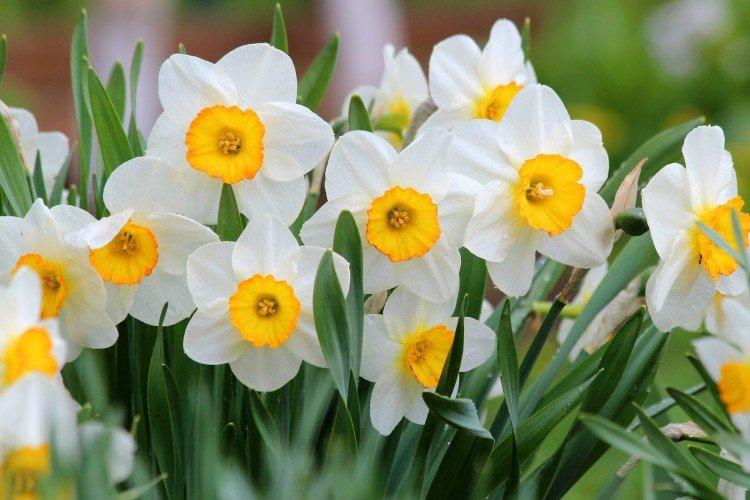
Who doesn't know and love daffodils? Their unusual flower shape cannot be confused with anything else. And in reality, there are also more exotic varieties, in addition to the general white or yellow favorites. We share detailed information about the types and features of caring for daffodils!
general information
Daffodils are one of the earliest flowers to bloom with the onset of spring. True, in nature it is an inhabitant of warm latitudes - the south of Europe, the Mediterranean and some regions of Asia.
At all times, daffodils have been surrounded by legends and mystical stories, and you probably know at least a few of them. In addition, they were actively used in perfumery and medicine. And some of the substances in the bulbs scare away rodents.
Gardeners value daffodils primarily for their amazing decorative qualities. From the dense bulb, several ribbon-like leaf plates and a leafless stem grow, at the top of which a beautiful flower is formed.
The life cycle of daffodil bulbs is interesting. Every year they release small roots that die off within a year, and then grow again. Flowers can be single or collected in beautiful umbrella inflorescences in several pieces.
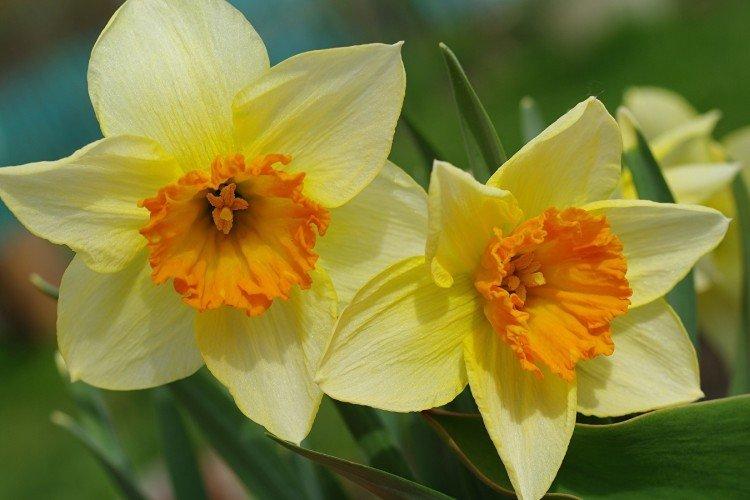
Types of daffodils
In total, there are about 60 species of daffodils, but less than a third of them are cultivated in the garden, and the rest are used as the basis for breeding hybrids. Let's talk about the most popular varieties!
Tubular daffodils
The peculiarity of this species is large single flowers with a long tube. There are white yellow or bicolor varieties. They all reproduce well.

Terry daffodils
One of the most decorative varieties with delicate openwork flowers. Moreover, all petals or only the crown can be terry. The color and size are also different.
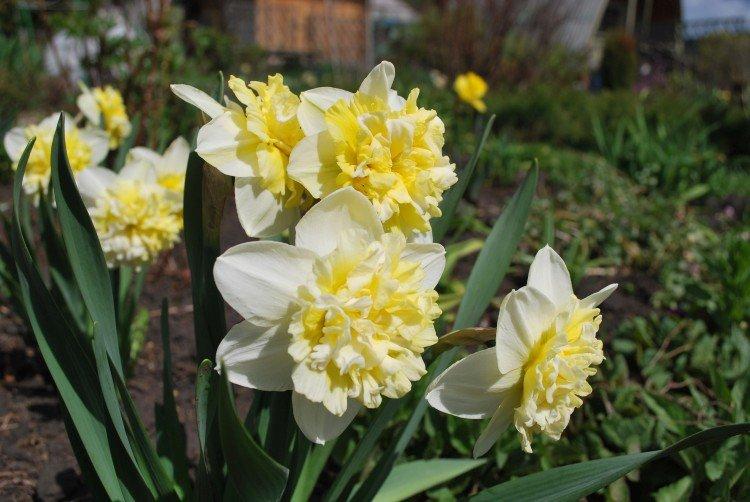
Species daffodils
These are decorative varieties and hybrids with a wide variety of buds. For example, spectacular snow-white daffodils with a pink crown.
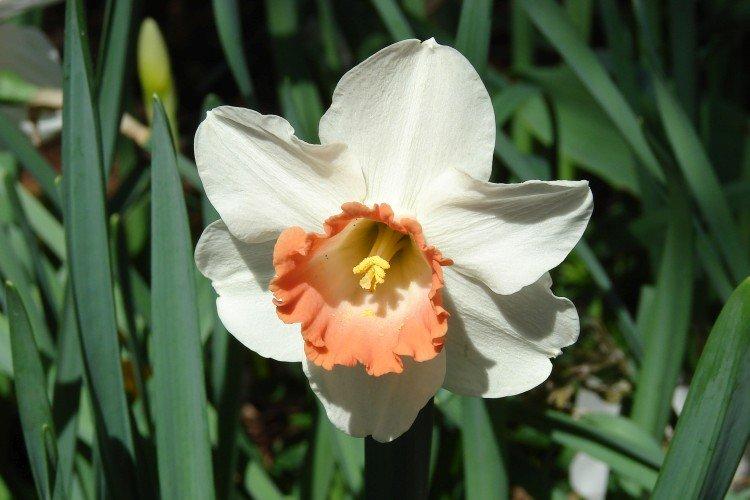
Multiflorous daffodils
As the name implies, this group differs in that the flowers are collected in lush inflorescences. Moreover, the number of buds can vary from 2 to 20.
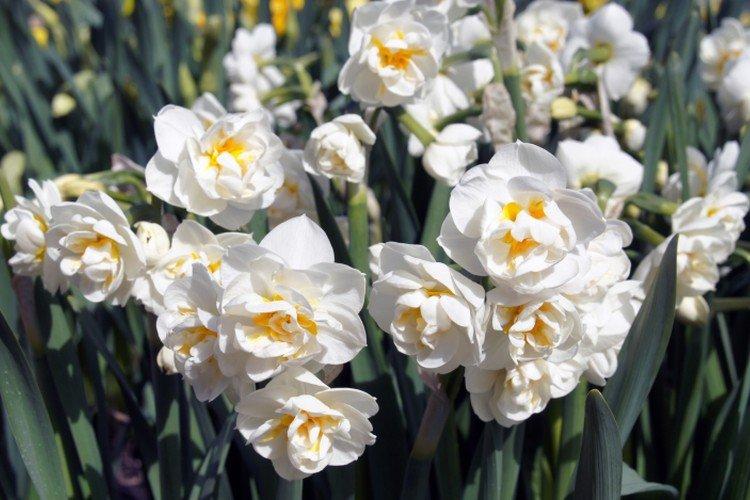
Large-crowned daffodils
Another species with single flowers, but at the same time they have a very large crown of petals. The colors are different, and even with a colored border.

Small-crowned daffodils
The closest relative of the previous group differs only in the smaller size of the crown. In general, the buds are smaller, but such varieties bloom very intensively.
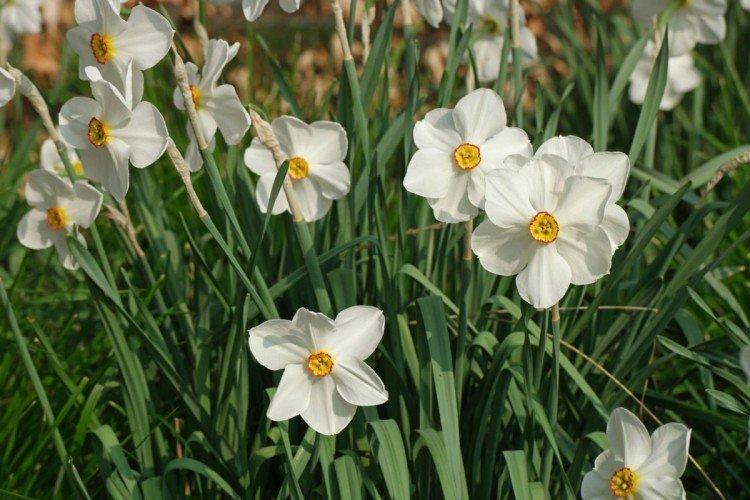
Daffodils Triandus
Delicate undersized varieties up to a maximum of 25 cm with the same small flowers, collected in 2-3 pieces. Snow-white varieties look especially elegant.
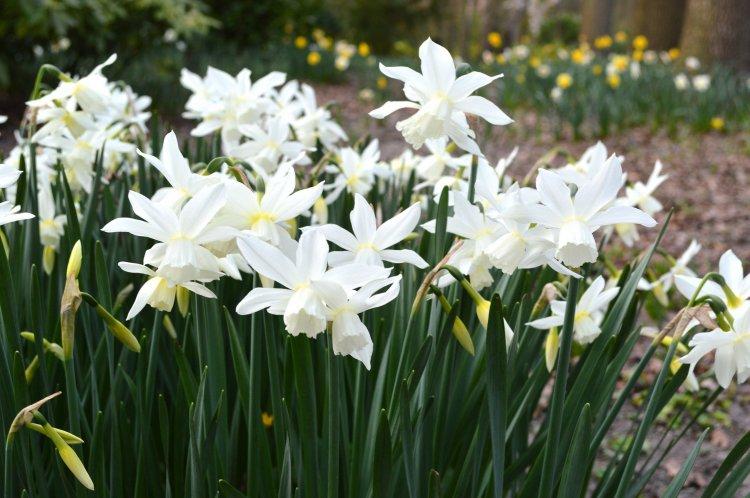
Daffodil care
Narcissists are not as capricious as many people mistakenly think. Still, we recommend that you take into account the basic rules of care!
Temperature
Like all primroses, they don't need too much heat. Bulbs begin to develop intensively when the soil warms up to at least +6 degrees.
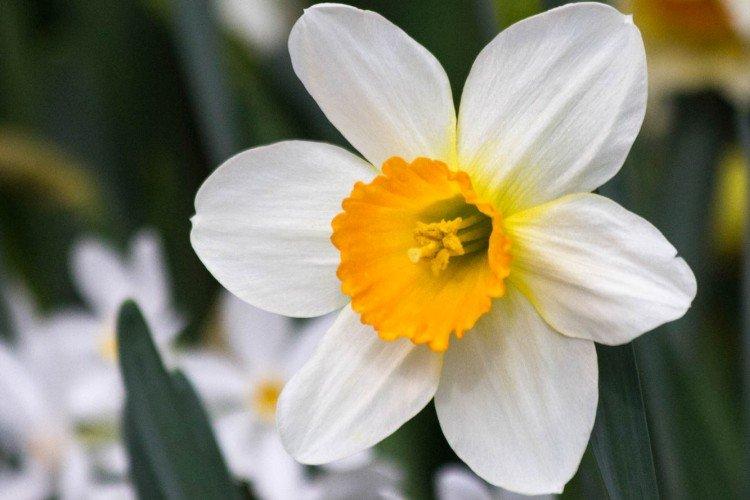
Lighting
Daffodils bloom early and quickly, so they definitely need sunlight. Choose well-lit areas that warm up throughout the day. Although some varieties feel good in partial shade.
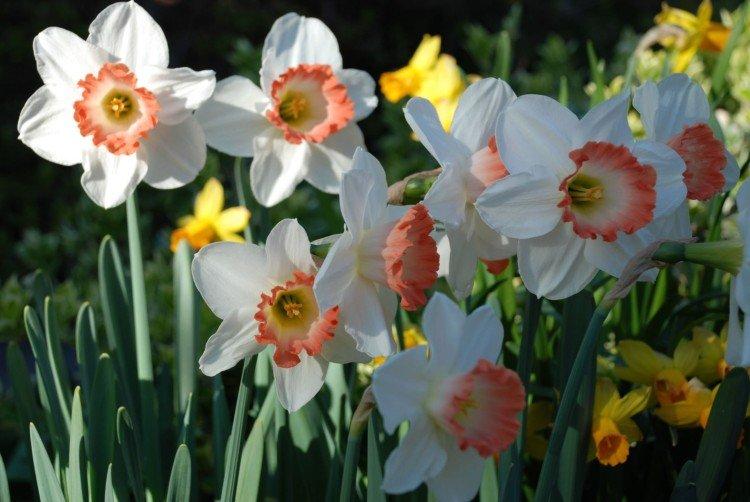
Watering
Daffodils prefer regular, systematic watering on a schedule. But it must necessarily be moderate so that the bulbs do not start to rot.
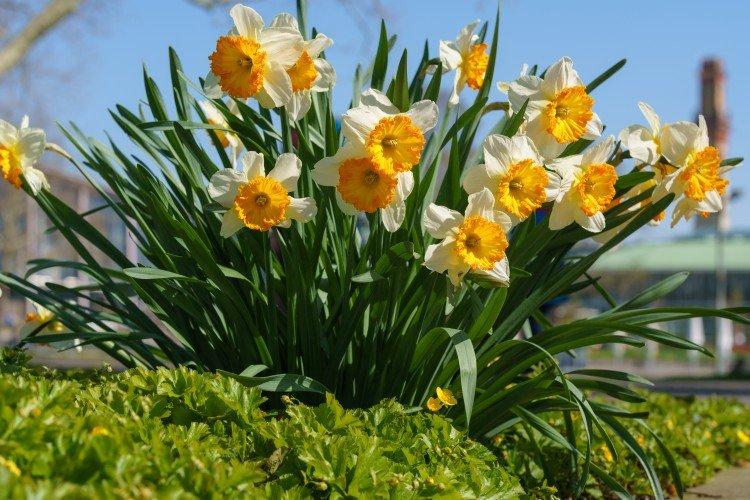
The soil
Daffodils are unpretentious to the acidity of the soil, but it must be sufficiently nutritious. And besides, it is loose and light to allow air and water to pass through. If there are many flowers in your garden, ask which neighborhood your daffodil variety prefers or does not tolerate, because there are nuances.
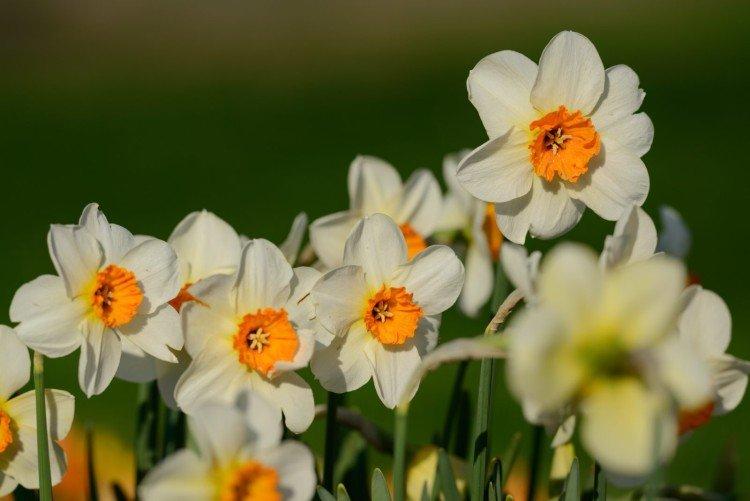
Fertilizers and feeding
Daffodils love not only nutritious soil, but also regular feeding. Moreover, during germination, complex fertilizers are needed, and nitrogen and potassium are needed for the appearance of a peduncle. During flowering, the plant reacts favorably to potassium and phosphorus. We do not recommend using organics for fertilization.
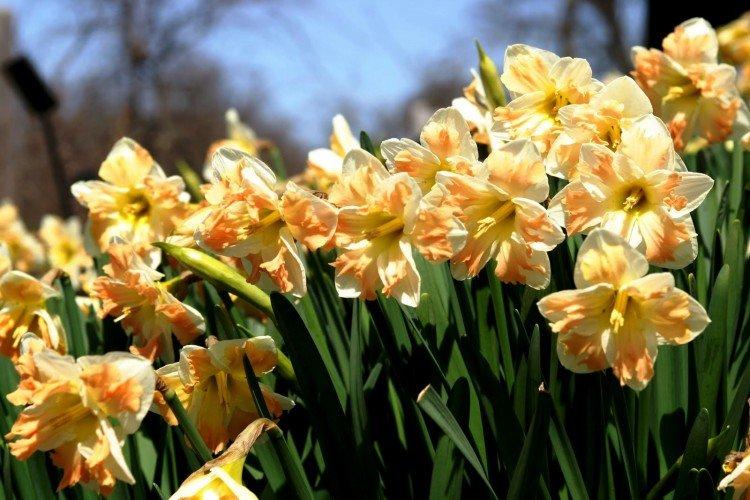
Storage
Daffodil bulbs can be stored. To do this, they are first dried a little, laid out in paper bags and stored in a ventilated room at a temperature of about 15 degrees. You can dig up the bulbs when the leaves finally turn yellow and fall down.
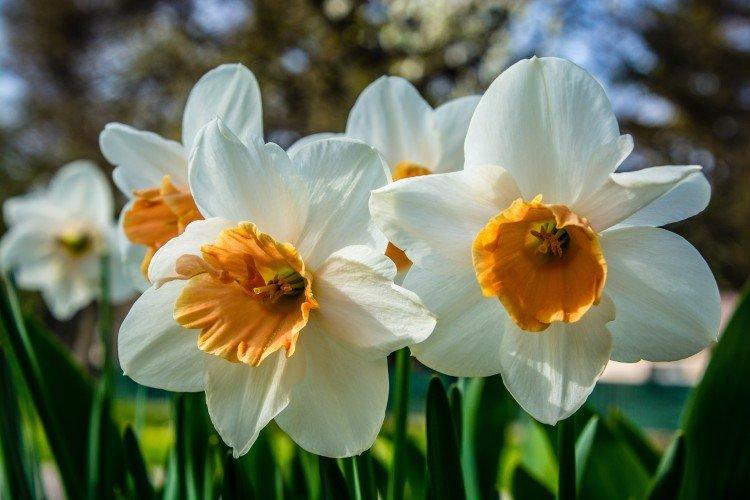
Transfer
You don't have to dig daffodils and grow them in one place for years. They develop successfully up to 10 years, depending on the type of soil. But when the bulb has grown too much or has stopped blooming, this is a sure sign that it is time to transplant it to a new place.
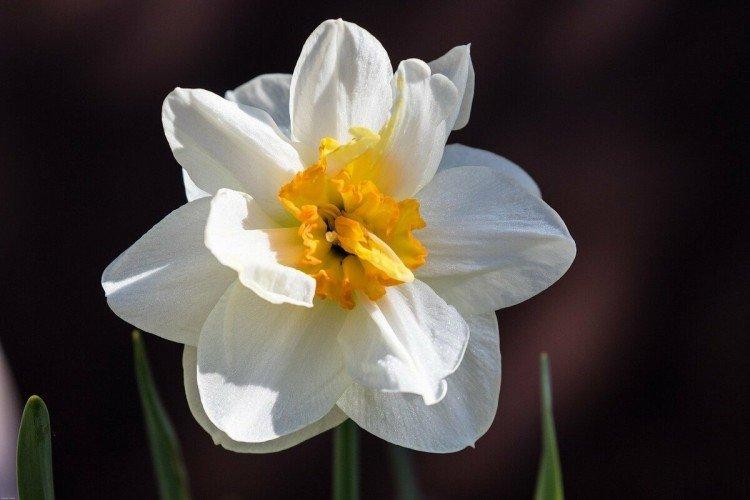
Pruning
This is an important point! Unlike most seasonal flowers, you don't need to prune the daffodil leaves after flowering. Wait until they dry up themselves and fall, because at this time the bulb accumulates useful substances for the future.
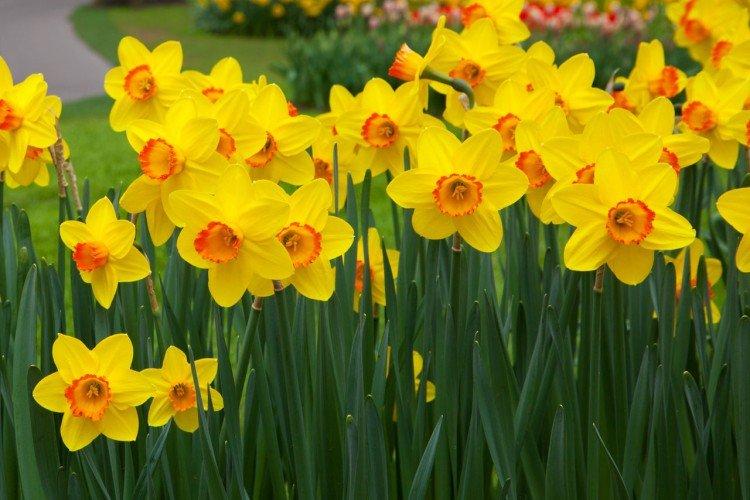
Planting and breeding
Daffodils are planted in late summer or early autumn so that they bloom in April. They are practically not propagated by seeds, because bulbs are much more effective.
In light soils, the bulbs can be buried further, but not more than 15 cm. But in heavy soil - only 5-7 cm, and then you will definitely need shelter for the winter. For example, a layer of dry leaves about 15 cm thick.
Do not make the planting too dense: let about 20 cm remain between the bulbs, and up to 30 cm between the rows. 2 weeks after planting, you can sprinkle the topsoil with peat or humus.
Daffodils are propagated in the process of transplanting or digging with the help of children. For hybrid varieties, this is generally the only available option in order to preserve its original properties. But you can wait for the seeds. To do this, do not remove the faded bud and wait for the fruit to form.
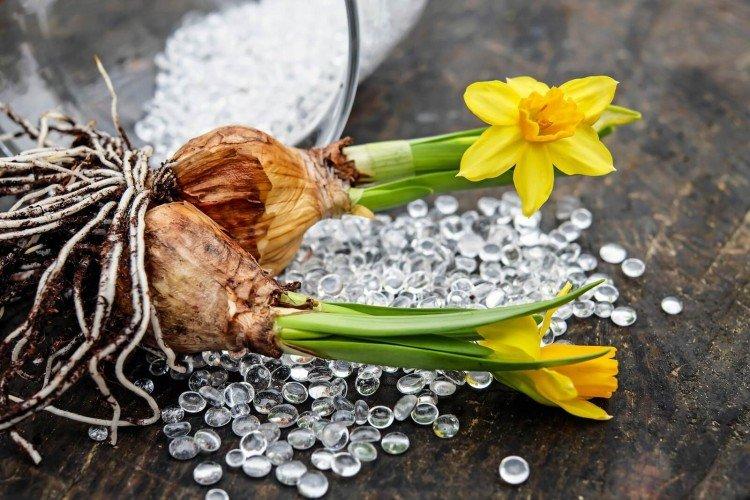
Pest and disease control
Unfortunately, daffodils in our latitudes quite often suffer from diseases and pests, and this turns into a vicious circle. Therefore, the problem is better prevented than treated later. In particular, choose resistant varieties, properly sushi and disinfect the bulbs, replant them in a timely manner and remove all damaged plants.
Daffodil bulbs often suffer from fly larvae, which hibernate in it or in the soil. And also - from the bulb mite. The plant lags behind in growth, does not release flower stalks and withers. For prevention, you need regular digging of the soil, treatment and planting of plants that are enemies of insects.
With high humidity, gray rot appears, and the flower begins to rot at the base. It is necessary to remove diseased plants and transplant flowers into the lighter soil. In addition, there is a viral mosaic, but there is no cure for it, and deformed daffodils with yellow or pale spots need to be urgently removed.

Daffodils - photo
The lawn, densely covered with daffodils, looks as if it has just left the pages of a fairy tale. In addition, it is a wonderful flower for flower beds and landscape compositions!
